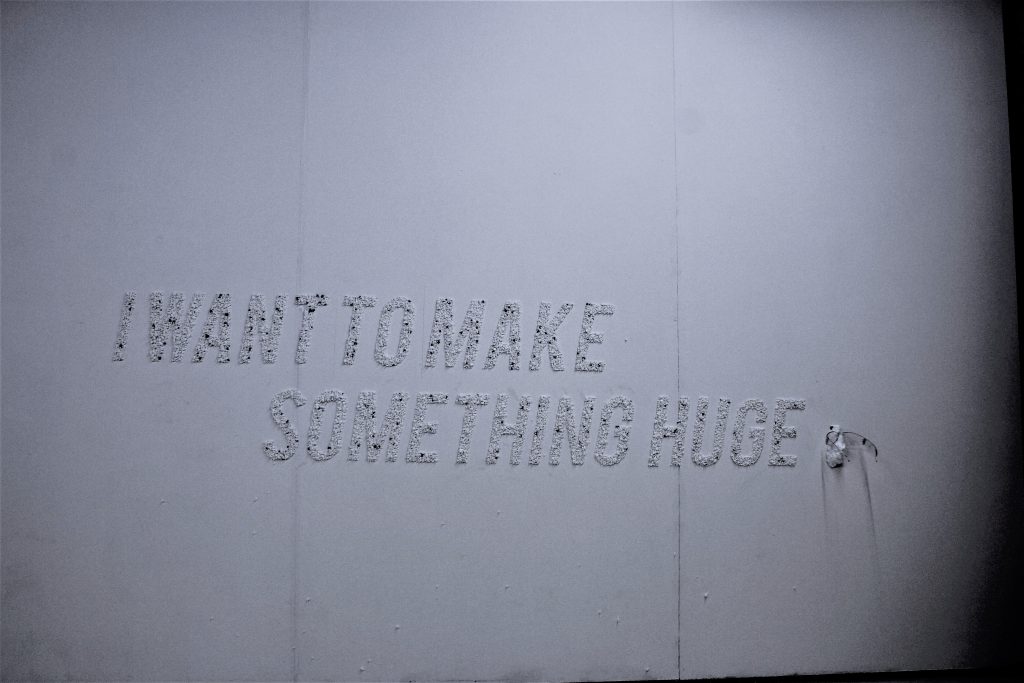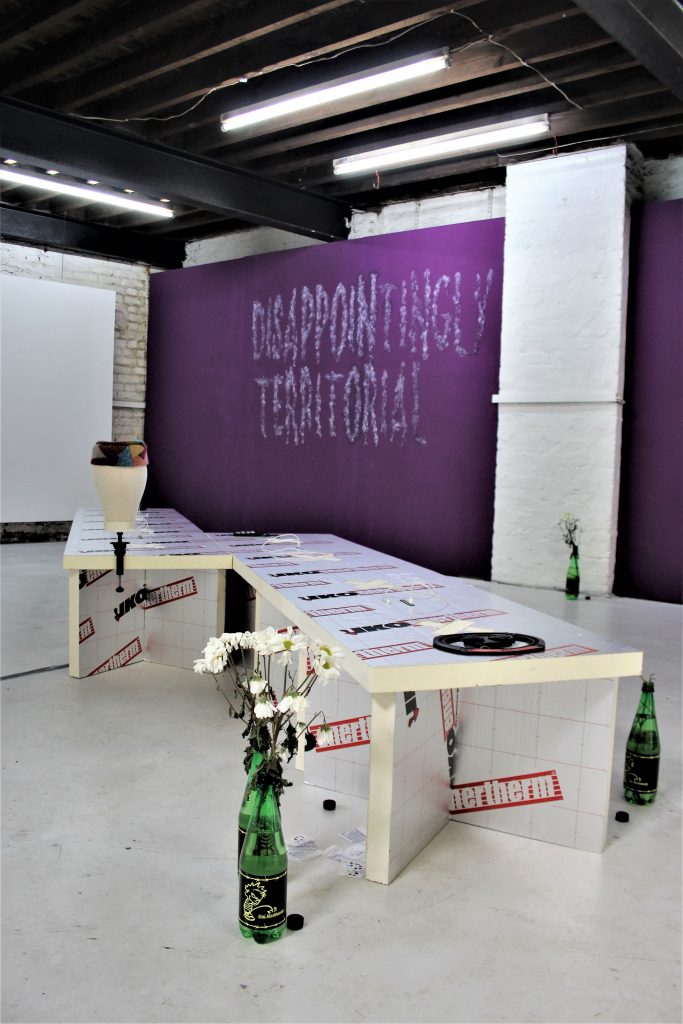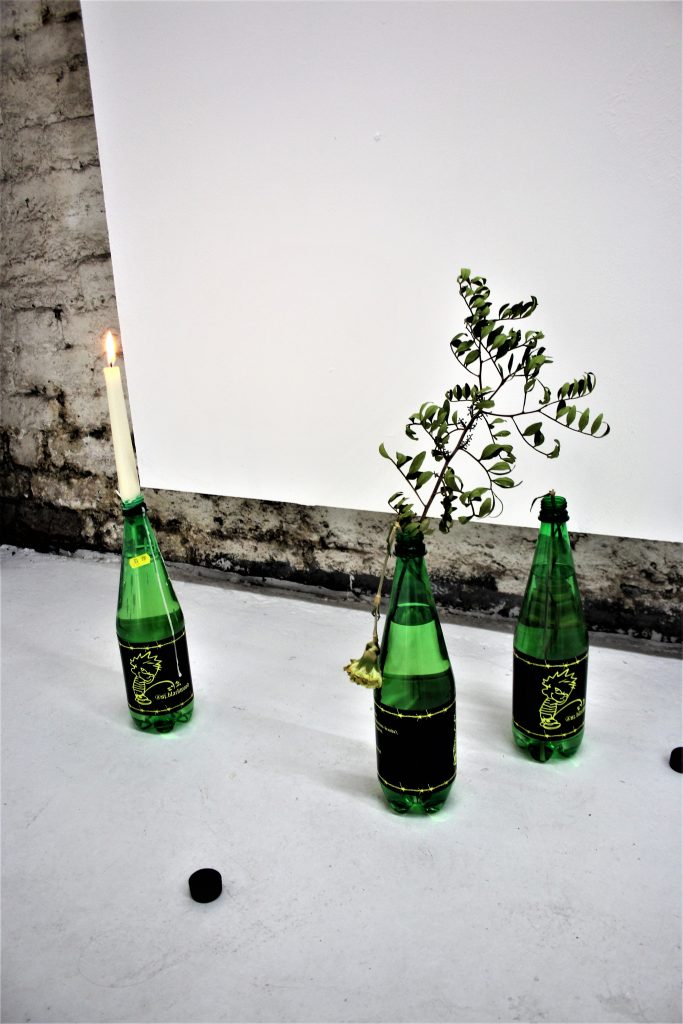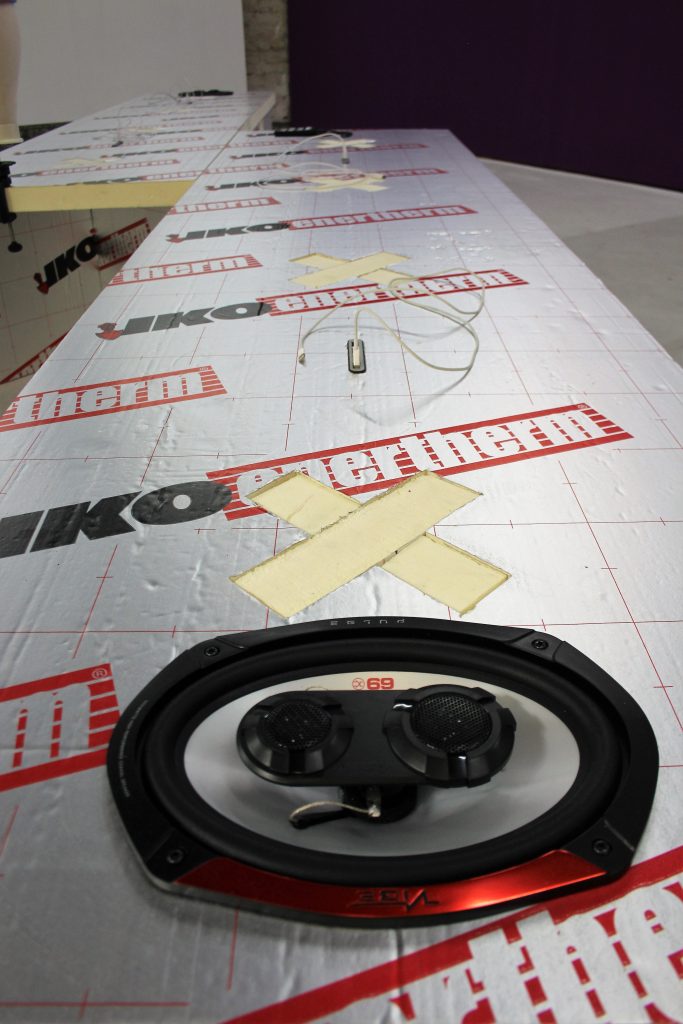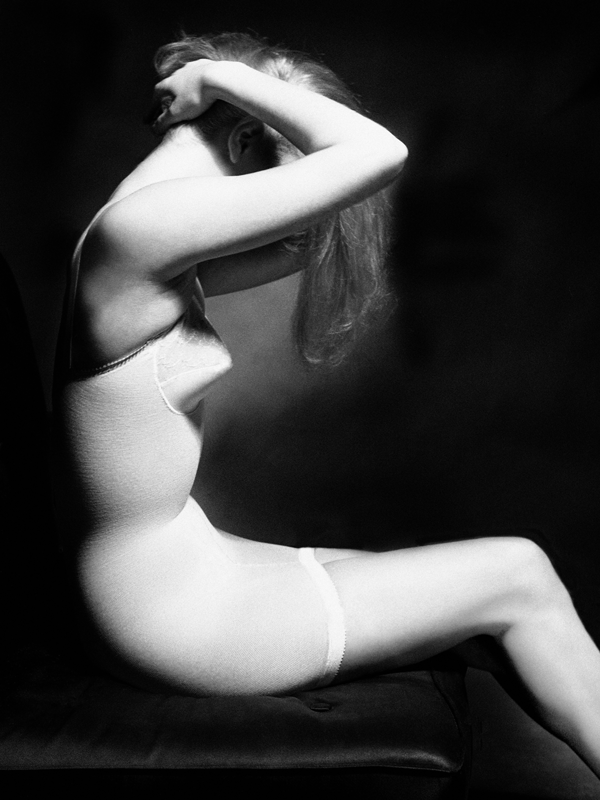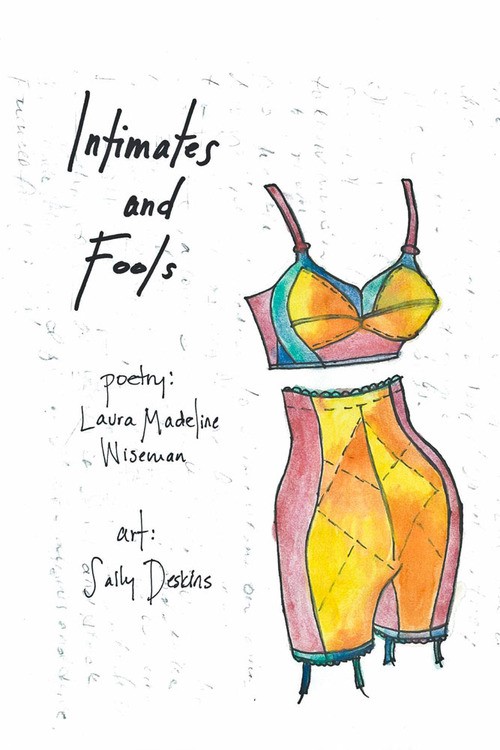BY M. SULLIVAN
—
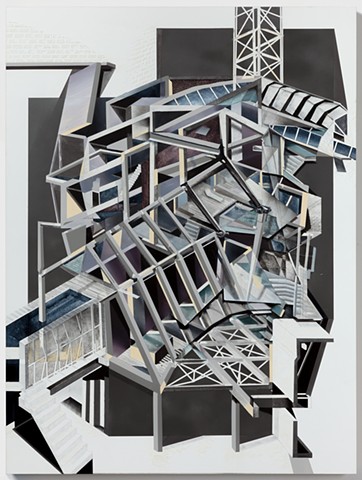
(BATH HOUSE, oil and acrylic on board)
“I want you to have that experience that you have walking down a quiet street and looking through a fence and seeing a dilapidated, brick building.” This is what Amir Hariri tells me as I look around his windowless studio on the seventh floor of a high-rise in Midtown. Somehow the small space doesn’t feel cluttered despite the significant amount of work along the walls, on the tables, and stacked in the corners.
At first glance, Hariri’s works do have the familiar look of a building. The components are architectural and structural, yet distorted. Not surprisingly, he studied architecture and engineering as an undergrad at the University of California, San Diego and he also holds a masters in structural engineering from Cornell.
His extensive background in these professional fields inevitably and understandably seeped into his work as a painter, producing abstract works that are compositionally and technically intricate. He considers his approach as similar to other “artist-engineers” or “technical artists” like Alexander Calder — an American sculptor whose works often use kinetic energy or motor power.
“When I’m painting I’m exploring surface, depth, space.”
It all started with Cezanne, according to Hariri’s timeline. Cezanne broke up the surface. And that’s precisely what Hariri wants to do. “There is a surface to be explored in a methodical, structural way,” he says, “and I want to explore the process of breaking down an object before we subject or burden the object with our own experiences.”
He had an epiphany while living in Williamsburg and the old Domino Sugar Factory was taken down. He realized he only truly noticed a building once it was gone. Our memories of ruins, the ruins themselves, and the ensuing deconstruction and reconstruction is what fascinates him and drives his work.
There’s a way we react to decay, either by succumbing to it or resisting it. And this idea creates a parallel between buildings and people — they are made, they serve a purpose, they die or are removed, turn to ruin, or they are preserved in some romantic way. With this in mind, he asks himself the question: “How do we create a subjective or subconscious experience of this?” That is, of the memory of a place, the feeling which a particular place can evoke, this passage of time, and of structure and decay. The key for Hariri is subjectivity and subconsciousness and the passivity through which these two things become ingrained in us.
“Memory does not document. It functions to document — but it doesn’t completely — at the same time it’s recording it’s becoming opaque.”
Before he starts a new work he will go to a place, but not to observe, not to take pictures or sketch drawings, but simply to activate his memory. He goes to visit — just to be there. He’ll talk to people, visit again, walk around, and then mull on these visits for weeks or months until all that remains is his subjective, subconscious memory of the place. Then he approaches the memory by painting, drawing, and sculpting. Soon an impression is formed — an impression influenced by the past but now also by the present as what he feels the day that he produces the work will naturally leak into the finished piece: “We cannot help but project our own condition onto things.”
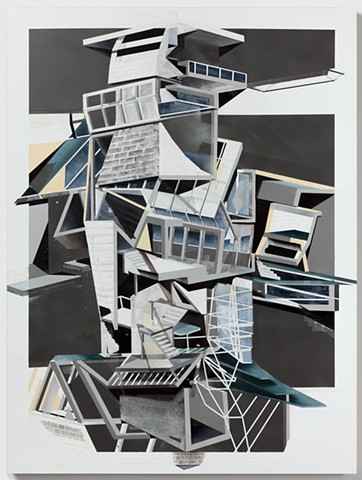
(VILLA NOVA, oil and acrylic on board)
He tells people to imagine walking the same street, the same corner, for years, going home or to work, and then one day you find yourself on the other side of the street and you see a blue awning that you’d never seen before. Your reality is unmade and remade in that moment. The ensuing surprise that mingles with the familiarity of the street is what he hopes to capture in his work. His works thus become the sum product of multiple experiences, and in this way he tries to communicate with the viewer — by giving them a multi-faceted, panoramic view. And this gives his works a truly cubist feel as you decide how to look at something from so many varied angles simultaneously.
It’s an attempt to get inside the viewer’s head. He wants to see what they see and portray every possibility. As such, he’s not interested in being “pure to the visual.” Instead he aims to take the three-dimensional and flatten it, giving his paintings an incredible amount of abstraction. By doing so, he hopes to question what the projection of reality is.
“‘When told the story of a prince turned into a frog and turned back into a prince, children have no doubt that the frog is still a prince.’ —Chomsky said that.”
Hariri chases this idea when he starts a new piece. To keep with the metaphor, he wants the viewer to see the frog and the prince in the same instance. He goes on to explain that people “build with associations” and as a result our eyes take short cuts. “Especially in abstract paintings — we look for short cuts: is it this, is it that?” And he wants to mess with these perceptions by distorting the perspective, changing the space and the relationships between objects in that space.
His overall goal is to create something which never becomes familiar — a piece where there aren’t any shortcuts, and the eye is forced to keep looking. This is how he feels he can best communicate with the viewer — through abstraction, because “abstraction strips something to its core,” something to which everyone can relate.
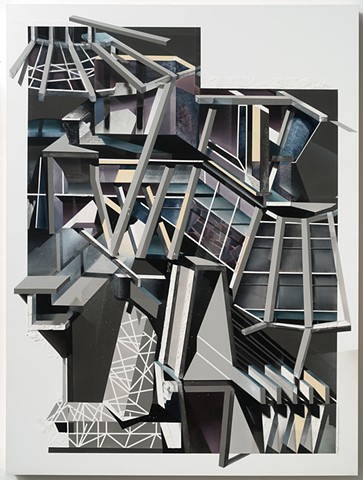
(RAW MANIFOLD, oil and acrylic on board)
“Roof is shelter, wall is separation — there’s a hierarchy and I use those archetypes to show you ideas in my paintings. So if I show you a stair I want you to move your eye up, if I show you a wall I want to stop your eye.”
In this way, the work is very analytical. He mentions a slew of painters from the cubist, dadaist, surrealist, abstractionist, and abstract expressionist movements and says that, to him, they are are all analytic painters. There’s something they notice that they keep coming back to, trying to figure it out.
This theoretical quality emerges in his interests outside of the studio-proper as well. One of his current projects is an app which uses computational aesthetics to analyze a scene and determine the best way to photograph the scene. Algorithms create feedback loops that point towards an ideally composed image. The algorithms can be calibrated and he even uses them for his own artistic practice. In this light, Hariri say, “I consider my work to be research” — continuing the long line of analytical artists before him.
—
M. Sullivan studied art and design at Northeastern University, English & American Literature at New York University, and is a current grad student in The New School’s MFA program. He lives in Brooklyn.
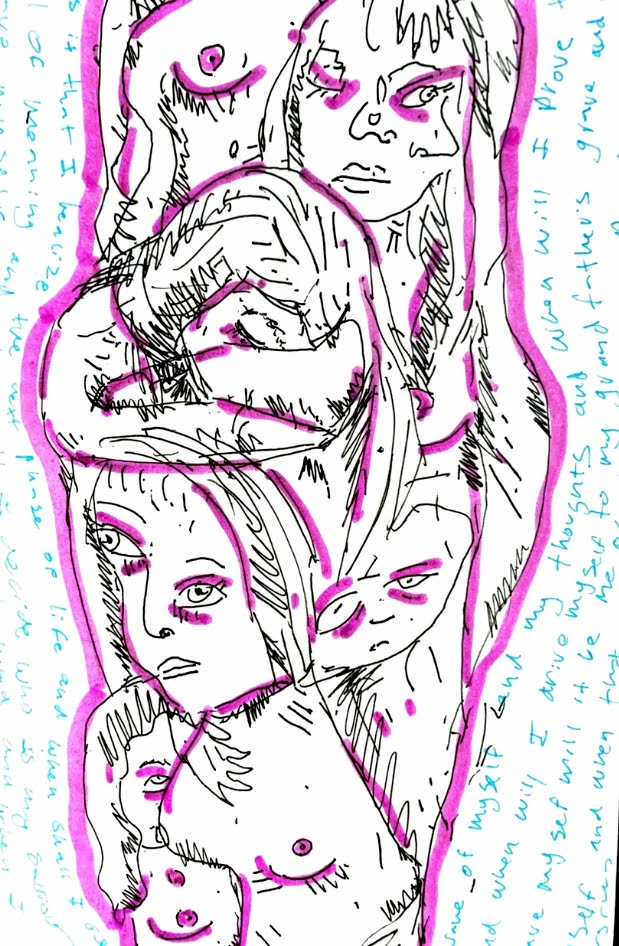
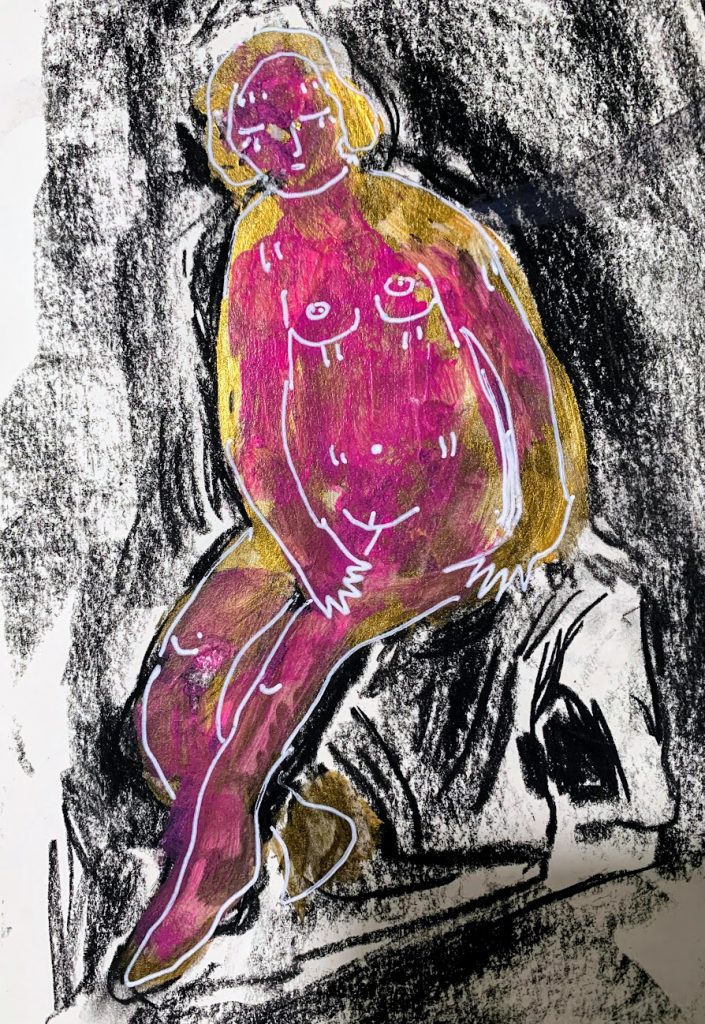
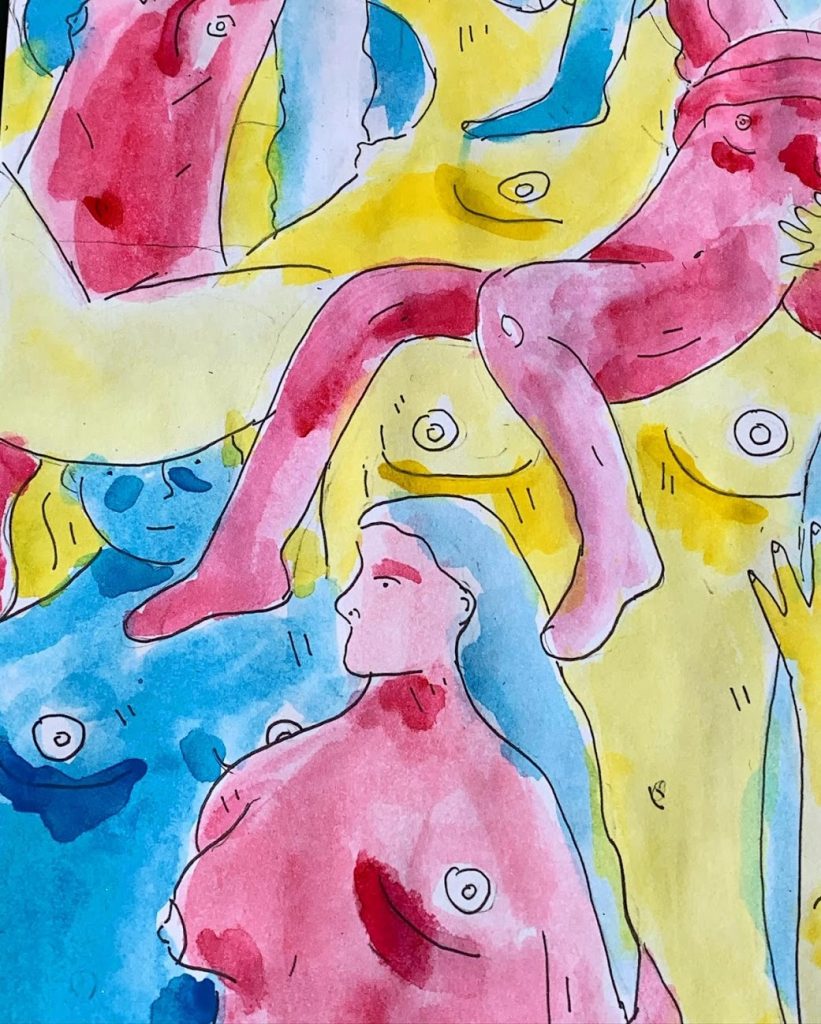
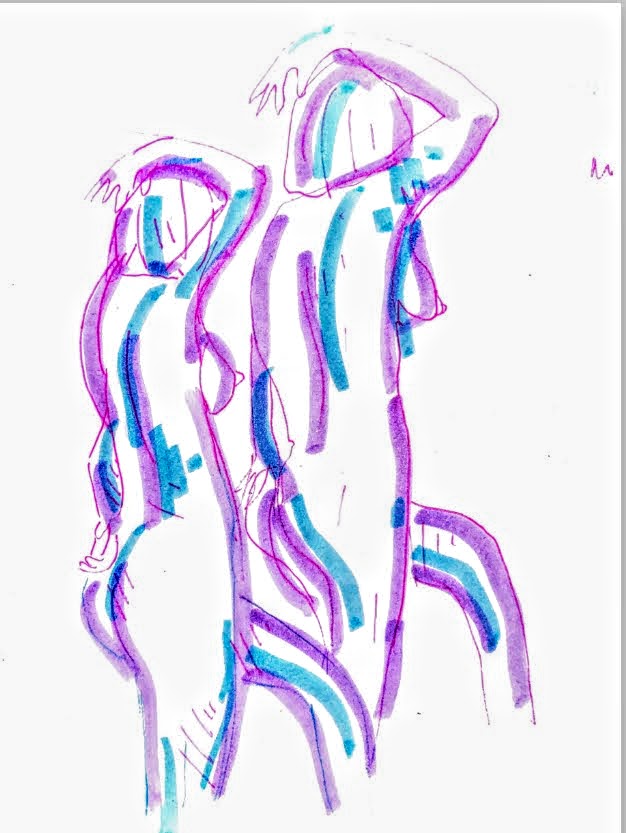
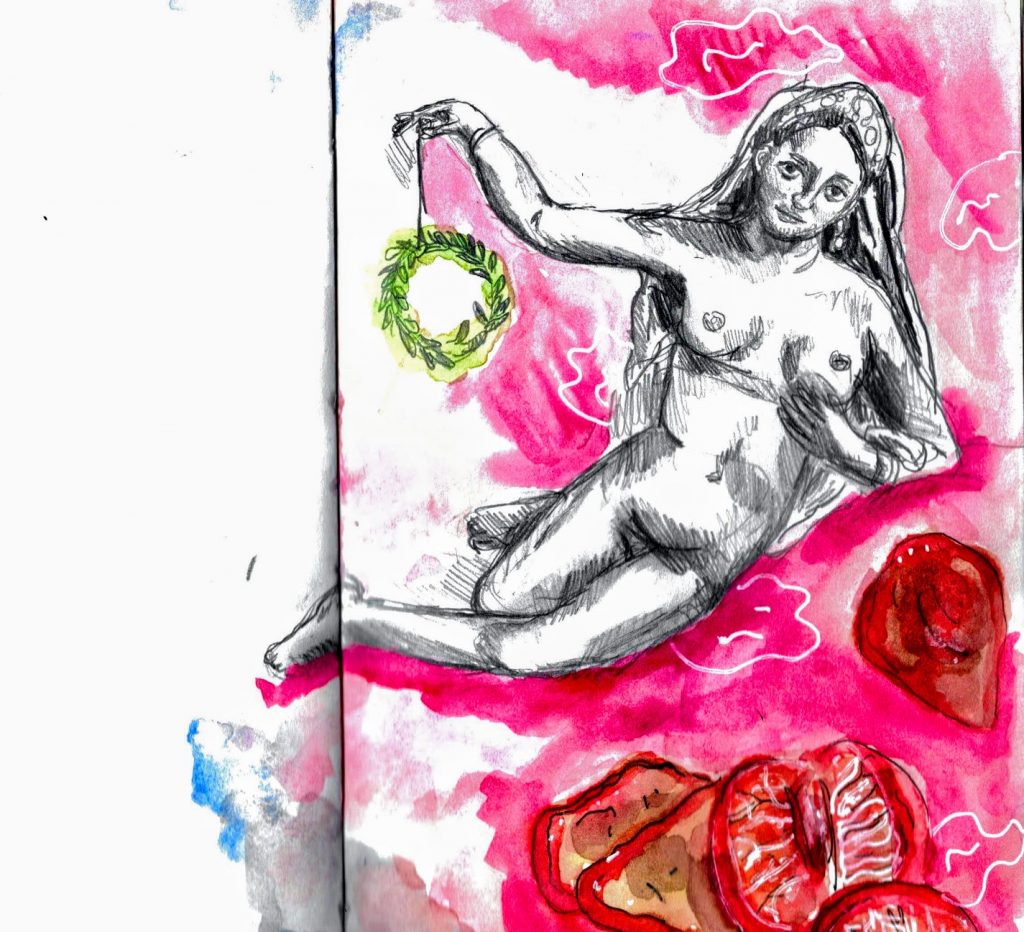

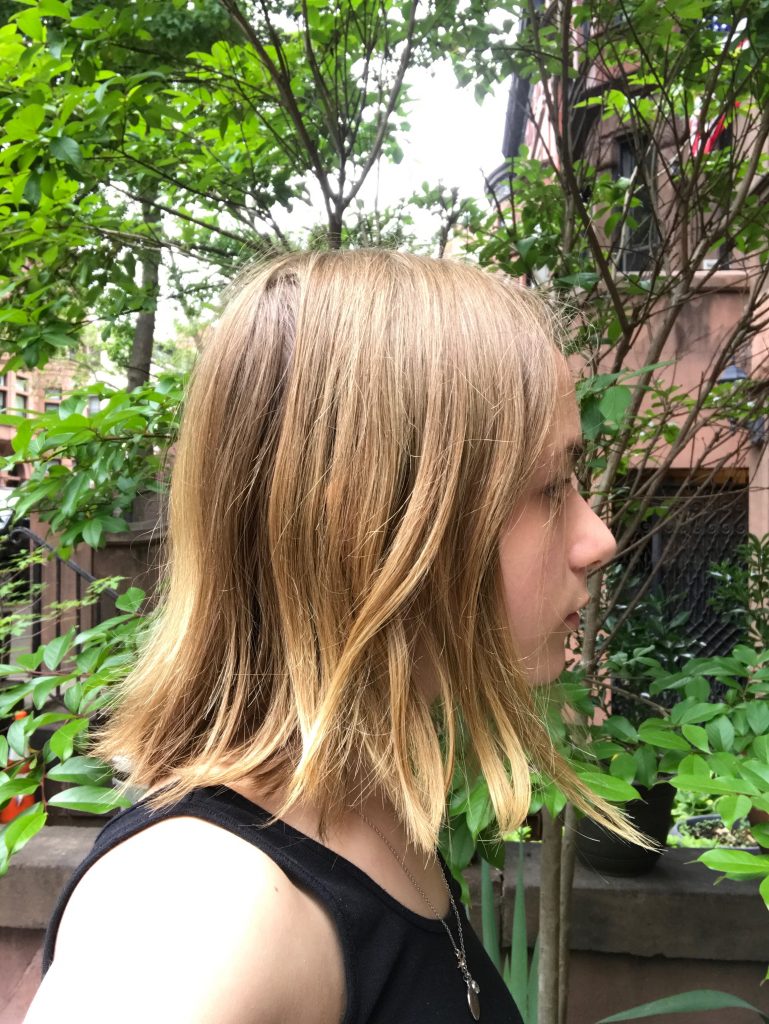
![[PANK]](http://pankmagazine.com/wp-content/themes/pank/assets/images/pank-logo-large.png)

